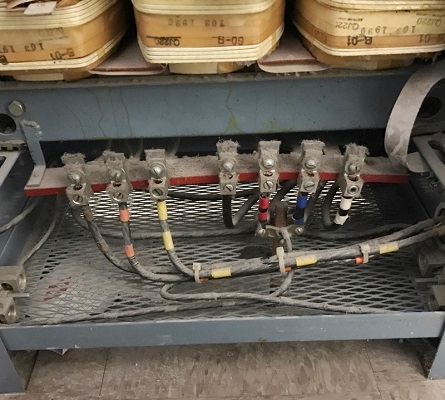Notes from the Field

Episode 11: I just want to go home!
By Jimmie Slemp
Identifying details have been changed to protect the innocent and not-so-innocent.
A few months ago I had a WECA alumni reach out to me. He said that they were doing a "TI" at a basic strip mall. He said that one of the construction workers had been shocked. However, it was unclear what the worker was doing, which made it hard for the team to locate the issue.
They decided to take some voltage measurements at the transformer that was feeding a panel in the TI. The existing set up was pretty typical of an electrical installation--there was a 3 phase 30kva transformer with a 480 volt "Delta" primary, and a 208-120 volt "Wye" secondary feeding a 200 amp panel. All of the primary voltages looked to be good, reading 277 volts from phase to ground, and 480 volts phase to phase.
However, when they read the secondary voltages they were a little suspect. The secondary voltages were:
- A - N = 120 volts
- B - N = 120 volts
- C - N = 120 volts
- A - G = 208 volts
- B - G = 0 volts
- C - G = 208 volts
- N - G = 120 volts
Between the voltage reading and the picture of the transformer, can you identify the issue?

You can see that there is a ground rod driven at the transformer. This is good, but if you look closely, there is no System Bonding Jumper (SBJ). Grounding and Bonding are like a safety net--sometimes you don't think about it until something goes wrong. According to the secondary voltage reading, there is definitely something wrong. It would appear that there is a Ground Fault on the B phase, and without an SBJ, the circuit with the ground fault cannot trip the circuit breaker and clear the fault. What about the 'Ground Rod'? The electricity does not want to go to ground--it wants to go home! The electricity was created in the coils of the transformer and that is where it wants to go. The SBJ connects the metal case of the transformer to Neutral of the transformer (making it the Grounded Conductor), and without it, the electricity cannot get home, which makes all of the metallic parts associated with the ground fault energized. After a couple of hours, the ground fault was found and the transformer was properly bonded. All is well--or is it? There is something else I mentioned in the story that could also be a problem. Did you catch it? Pay close attention to the transformer details...
Answer: The transformer is feeding a 200 amp panel. However, the transformer is severely undersized. A 3 phase 30kva with a secondary voltage of 208 voltage has a Full Load Current (FLC) of 83 amps [30,000 VA / 208 V x 1.73)]. If the panel is really loaded up, the transformer could overload and possibly burn up.
Learn about voltage, transformers, and a whole lot more in WECA's Get Wired! Program for Electrician Trainees, or in one of our three Apprenticeship programs. Already a journeyman? Brush up with Continuing Education.